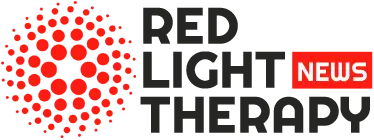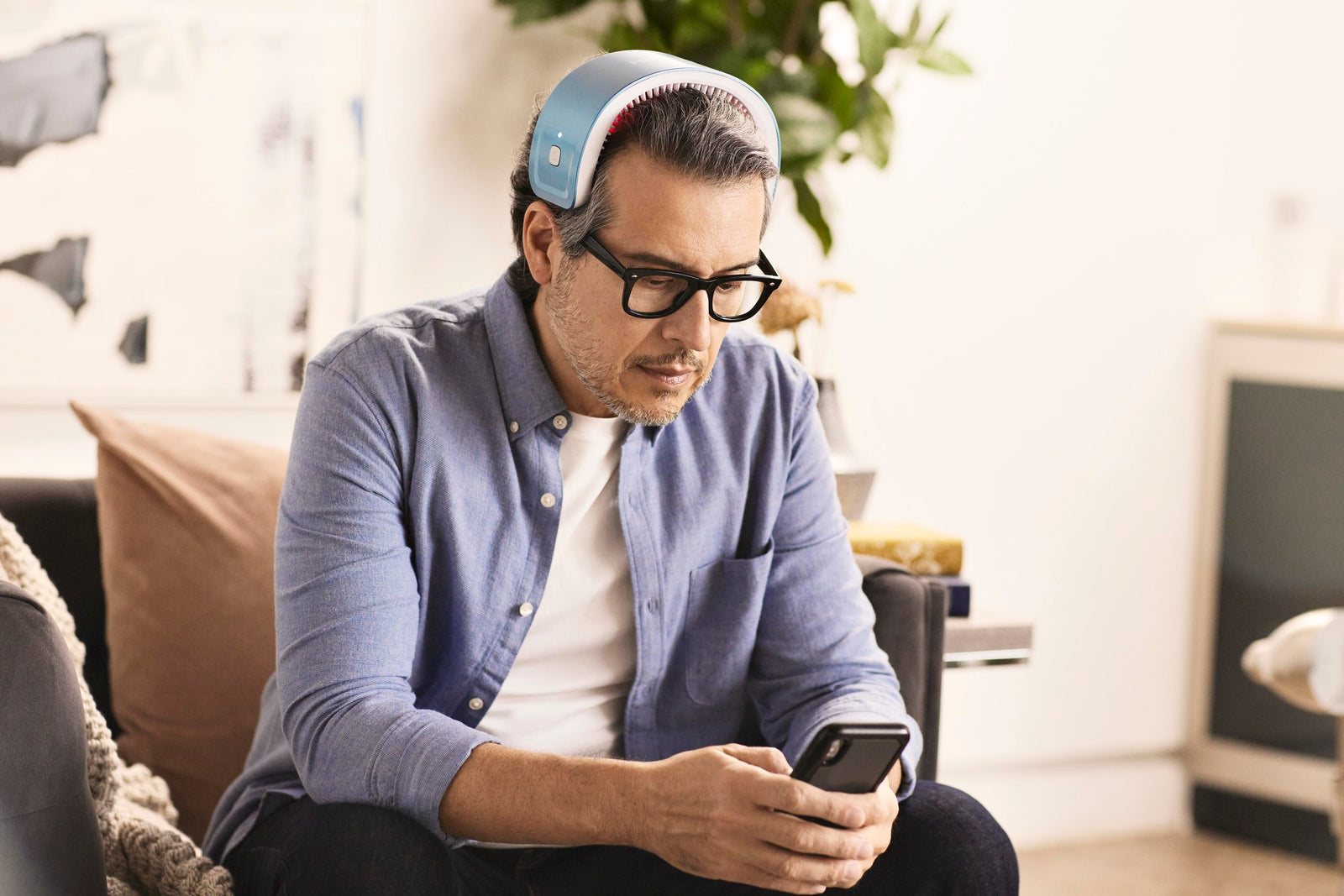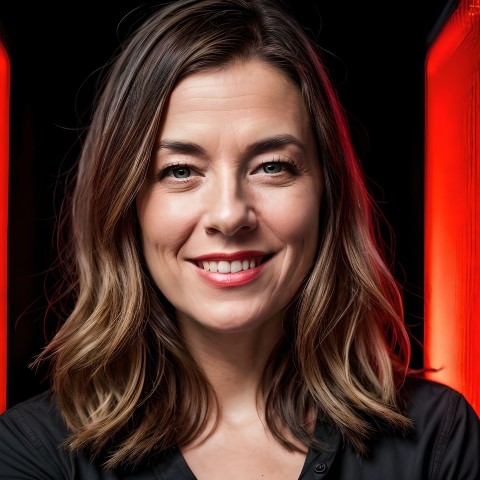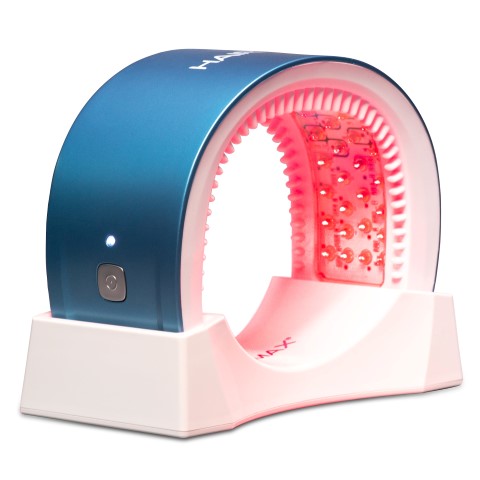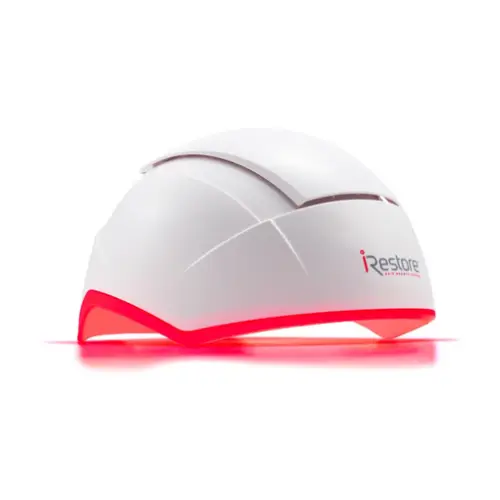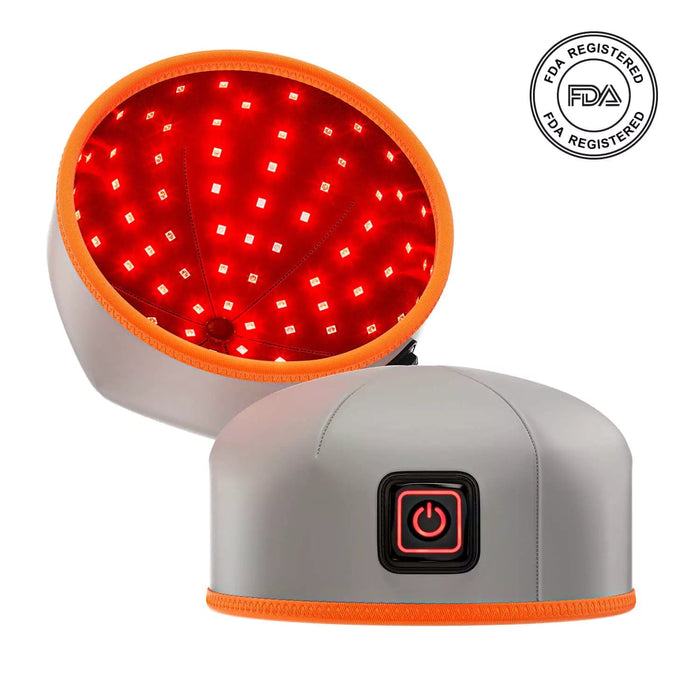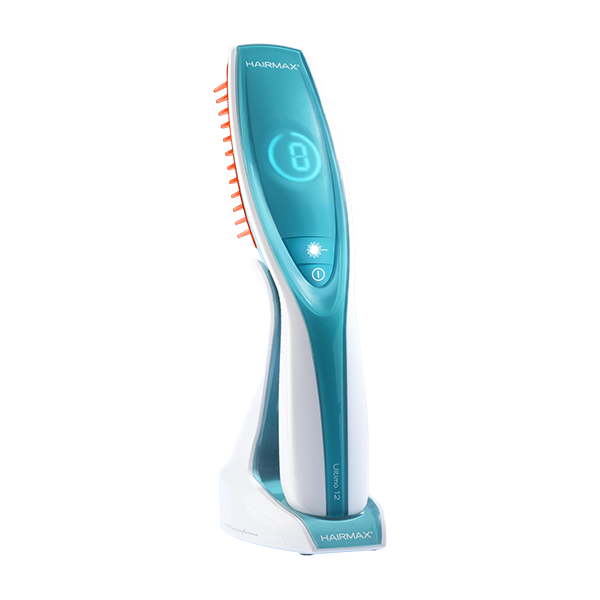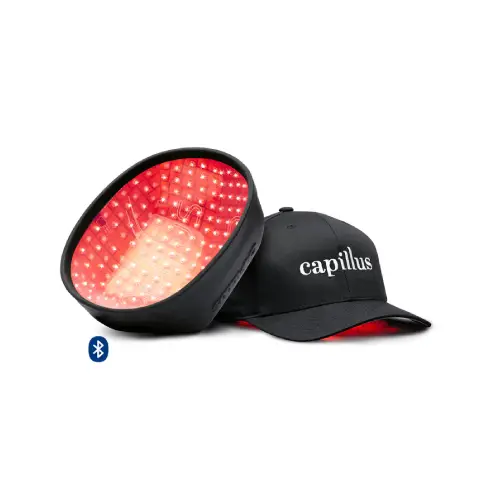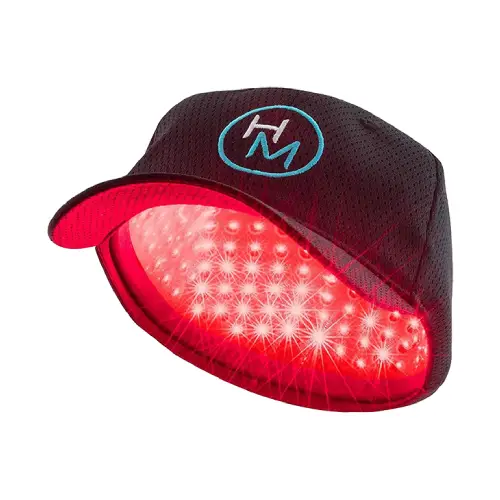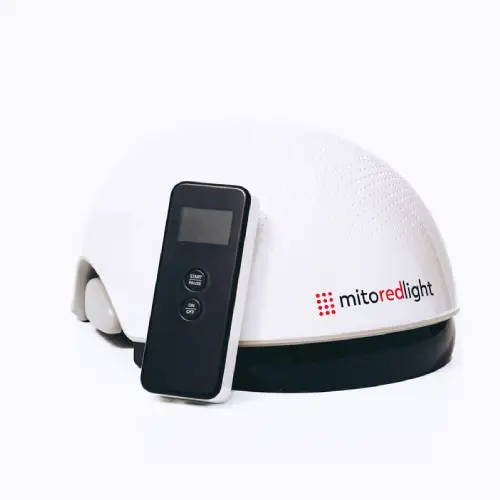From Thinning to Thriving: Top RLT Devices for Hair Restoration and Scalp Health
Red light therapy (RLT) has long been celebrated in the medical and aesthetic fields for its diverse benefits. The magic lies in its ability to stimulate cellular activity using specific light wavelengths, paving the way for various therapeutic applications, from skin rejuvenation to pain relief. Recently, its prowess has been channeled into another pressing concern: hair loss.
When it comes to addressing hair thinning and balding, RLT works at a cellular level. Hair follicles, much like any other cells, thrive on energy. By enhancing mitochondrial function, RLT increases cellular energy production, invigorating dormant hair follicles and encouraging them to enter the growth phase. This science-backed method serves as a beacon of hope for those struggling with hair loss issues.
The efficacy of RLT in hair growth is not just a mere speculation; it's grounded in extensive research. From research initiated by NASA to countless scientific studies over the years, a large body of evidence proves the effectiveness of this technology in the field of hair regeneration.
As we delve into the top red light therapy devices for hair loss in 2023, our selection prioritizes scientific foundation, quality, effectiveness, safety, and value. We understand that while science is crucial, design and affordability significantly influence a user's experience. Join us as we highlight the standout products offering a perfect blend of innovation and reliability in hair restoration.
Let's explore the best red light therapy devices for hair loss that truly stand out in terms of efficacy and value:
Points to keep in mind when deciding on the best red light therapy device for Hair loss:
Wavelength & Hair Growth:
Red Light Therapy (RLT) has been gaining traction as a non-invasive, drug-free approach to address hair loss and promote hair regrowth. Here are the specific wavelengths that have been shown to be effective:
Red Light (630-660 nm)
- Primary Benefits: Increases blood flow and oxygen to the scalp, stimulating the hair follicle cells.
- Specifically Addresses: Strengthening hair, preventing thinning, and encouraging the growth of new hair.
Near-Infrared Light (810-850 nm)
- Primary Benefits: Penetrates deeper into the scalp tissue, enhancing cellular metabolism and rejuvenating aging cells.
- Specifically Addresses: Reviving dormant hair follicles and promoting a healthier scalp environment.
Infrared Light (850-940 nm)
- Primary Benefits: Deep tissue penetration which helps in nutrient absorption and scalp healing.
- Specifically Addresses: Scalp health and prevention of hair follicle damage.
Red light therapy for hair growth works on the principle that light can energize cells, stimulate the production of protein, and improve oxygenation and blood circulation in the scalp, thereby promoting hair growth. As with any treatment, individual results may vary, and it's essential to choose devices with proven efficacy. Always consult with a dermatologist or hair specialist before starting light therapy for hair growth.
Device Type and Ease of Use :
Hair loss can be a challenging ordeal for many, but thanks to technological advancements, there are now a variety of devices designed to combat this issue. From helmets to handheld combs, each device offers unique benefits tailored to individual needs. Here's a guide to help you navigate the array of red light therapy tools specifically geared toward hair growth:
Hair Growth Helmets & Caps:
- Best for: Covering the entire scalp for uniform treatment.
- Ease of Use: Simply wear like a hat or helmet for the specified treatment duration.
- Power: Usually come with a cord, but some models offer rechargeable battery options.
Laser Bands:
- Best for: Treating wider areas of the scalp in sections.
- Ease of Use: Position the band on the desired area of the scalp and move as needed.
- Power: Typically corded, but some might have cordless options.
Handheld Comb & Brush Devices:
- Best for: Targeting specific thinning areas and massaging the scalp simultaneously.
- Ease of Use: Used just like a regular comb or brush, gliding over the scalp.
- Power: Many are battery-operated or rechargeable.
Choosing the right device depends on your specific hair concerns, desired level of commitment, and budget. Regardless of your choice, consistency is key.
Quality, Efficacy, and Safety
Quality:
- Choose devices made with medical-grade materials, often backed by reputable brands known for their commitment to quality.
Efficacy:
- Ensure the device delivers the right wavelength for hair growth. Look for FDA clearance, scientific studies, and positive user feedback.
Safety:
- Safety is paramount. Opt for devices with built-in safety features and a record of safety evaluations. Follow manufacturer guidelines and start with shorter sessions to gauge scalp response.
Remember, a worthy RLT device balances effectiveness with durability and user safety.
Red light Therapy for Hair Loss, What does the science say?
Red light therapy (RLT) also known as Low-Level Laser Therapy (LLLT) has made significant strides in the realm of hair restoration. The technology is backed by robust scientific studies, evidencing its efficacy in combatting hair loss and promoting hair regrowth and scalp health.
One notable study, “Efficacy and Safety of a Low-level Laser Device in the Treatment of Male and Female Pattern Hair Loss,” was published in the American Journal of Clinical Dermatology in 2014. This research affirmed the positive impact of LLLT in enhancing hair density.
Another significant study featured in the Journal of Cutaneous and Aesthetic Surgery highlighted the effectiveness of LLLT in treating androgenetic alopecia. This research not only showcased the merits of laser therapy for hair loss but also emphasized its potential when combined with other treatments to boost hair regrowth synergistically.
Both studies, among numerous others, underscore the science-backed benefits of red light therapy for hair loss and hair restoration. For further information on the extensive benefits of this technology for hair conditions, please refer to our more in-depth article Red Light Therapy for Hair Loss & Hair Growth and to the scientific references at the bottom of this page.
Experience the forefront of hair loss technology with our choice of top red light therapy devices for 2023:
Hairmax® – ComfortFlex Laserband 82
The LASERBAND 82 is a medical-grade laser device designed for targeted hair growth treatment. It features 82 lasers and provides full scalp coverage when moved over three different areas.
- Medical-Grade Lasers
- No Side Effects & Drug-Free
- 8 FDA Clearances & Clinically proven
- Individual results may vary
- Consistency required
| Brand | Hairmax® |
| Wavelength | 655nM +/-10nM |
| Additional Specification | 82 Medical-Grade Lasers (Not LEDs) – Cordless |
| Safety and Efficacy | 8 FDA 510(k) clearances for both men and women |
| Form | Laser Head Band |
| Main Application | Hair growth – Reverse Hair loss- Scalp Health |
| Warranty | 1-Year Warranty – 6 Month Money Back Guarantee |
With a unique ComfortFlex Band and soft touch teeth, it ensures a comfortable experience. Clinically proven and FDA-cleared, the device requires just 90 seconds of use, three days a week, to reverse hair thinning and restore the natural growth cycle.
Harnessing therapeutic light energy, this tool is expertly designed to increase hair density and fullness. The precise alignment and spacing of the laser diodes inside ensure optimal energy delivery to the scalp, promoting consistent and uniform stimulation. With 8 FDA clearances and 14 medical device licenses to its name, the LaserBand 82 stands tall in its category. It's clinically proven, free from side effects, and completely drug-free.
iRestore Professional – Laser Hair Growth System
The iRestore Professional system, FDA-cleared for combatting hair loss and thinning, stands out with its powerful configuration of 282 lasers and LEDs, totaling 1410 mW in output.
- Clinically-proven result
- Powerful output
- Non-invasive treatment
- Individual results may vary
- Time commitment necessary
| Brand | iRestore |
| Wavelength | 650nm (Red Light) – (1410 mW total power output) |
| Additional Specification | 82 Medical-Grade Lasers and 200 Red Luminous LEDs |
| Safety and Efficacy | FDA Clearance- Class III Medical device (<5mW) |
| Form | Wearable Helmet |
| Main Application | Hair growth – Reverse Hair loss- Scalp Health |
| Warranty | 2-year Warranty + 12 Months Money Back Guarantee |
This power surpasses many other devices available today, and users can anticipate noticeable results within 3 to 6 months. Designed innovatively, the iRestore Pro ensures extended scalp coverage, effectively targeting the hairline, temples, and lower crown. From our research, users experienced over a 43% increase in hair growth.
Under the guidance of board-certified laser surgeon and dermatologist, Dr. Adam Bodian, a rigorous double-blind clinical study was undertaken to assess the iRestore's impact on alopecia. The study unveiled excellent results that even astounded the team of researchers.
Scienlodic Hair Regrowth Hat
The Scienlodic Red Light Therapy Hair Growth Hat is a state-of-the-art solution designed for enhancing hair growth and vitality.
- Clinically-proven results
- Drug free
- Non-invasive treatment
- Individual results may vary
- Time commitment necessary
| Brand | Scienlodic |
| Wavelength | 660nm (red) and 850nm (near-infrared) |
| Additional Specification | 120 Medical Grade LEDs 10 Hz & 40 Hz double-pulse modes |
| Safety and Efficacy | FDA Clearance- Class II Medical device |
| Form | LED Hair Regrowth Hat |
| Main Application | Hair growth – Reverse Hair loss- Scalp Health |
| Warranty | 2-year Warranty + 60 Money Back Guarantee |
Equipped with 120 medical-grade LEDs, it utilizes dual-pulse modes at 10 Hz & 40 Hz. These, combined with 660nm and 850nm wavelengths, ensure deep scalp penetration to stimulate dormant hair follicles and address hair loss.
This FDA-cleared device offers a distinct advantage over other products due to its dual-wavelength technology: the 660nm red light and 850nm infrared light. This combination, backed by clinical research, targets hair thinning resulting from genetic causes, known as androgenetic alopecia. The hat's design facilitates non-invasive penetration, reaching deep scalp tissues to activate hair follicles effectively. For safety, the device incorporates an automatic shut-off after 20 minutes and has built-in overheating protection.
Hairmax® Lasercomb – Ultima 12
The Ultima 12 LaserComb, a pioneer in laser hair growth, uses 12 medical-grade lasers to deliver therapeutic light energy to hair follicles.
- Medical-Grade Lasers
- No Side Effects & Drug-Free
- 8 FDA Clearances & Clinically proven
- Individual results may vary
- Consistency required
| Brand | Hairmax® |
| Wavelength | 655nM +/-10nM |
| Additional Specification | 12 Medical-Grade Lasers (Not LEDs) |
| Safety and Efficacy | 8 FDA 510(k) clearances for both men and women |
| Form | Hand-held device |
| Main Application | Hair growth – Reverse Hair loss- Scalp Health |
| Warranty | 1-Year Warranty – 6 Month Money Back Guarantee |
This revitalizes the follicles to stimulate growth and reverse thinning. With patented hair-parting teeth for optimal laser delivery, the device requires just 8 minutes of use, three days a week, to promote fuller, denser, and more vibrant hair. The device comes with a risk-free 6-month money-back guarantee.
Capillus Plus Laser Cap for Hair Growth
The Capillus PLUS Laser Cap stands out as a superior device in our range. It's equipped with 202 medical-grade laser diodes and delivers 1060 mW of laser energy, which is 1.8x more lasers than our CapillusOne model.
- Clinically-proven results
- Class 3R Laser
- Non-invasive treatment
- Price point not accessible to all
- Time commitment necessary
| Brand | Capillus |
| Wavelength | 650 nm (red) – Output Mode continuous |
| Additional Specification | 202 medical-grade laser diodes (5 mW) |
| Safety and Efficacy | FDA Clearance- Class 3R Laser |
| Form | Wearable Cap |
| Main Application | Hair growth – Reverse Hair loss- Scalp Health |
| Warranty | 2-year Warranty + 6 Months Money Back Guarantee |
This enhanced number of lasers ensures denser coverage, leading to more visible and faster results. The primary distinction between our Capillus models lies in the density of scalp coverage and total energy output.
The Capillus PLUS is an FDA-cleared, wearable device powered by batteries. It's been endorsed by our esteemed network of physicians to counteract hair thinning caused by genetics (androgenetic alopecia) and to halt further hair loss progression. Additionally, its newly designed flexible fit ensures greater comfort during use, making it a reliable solution to reverse hair loss.
Hairmax® Laser 272 Powerflex Cap
The HairMax Laser 272 PowerFlex Cap offers clinically-proven laser treatments, making advanced hair care accessible both at home and on-the-go.
- Clinically-proven results
- High Grade Lasers
- Non-invasive treatment
- Price point not accessible to all
- Time commitment necessary
| Brand | Hairmax® |
| Wavelength | 655nM +/-10nM / 272 medical-grade lasers (Not LEDs) |
| Additional Specification | 132 (2 per LED bulb), 66 LED bulbs |
| Safety and Efficacy | Seven FDA 510(k) clearances for both men and women |
| Form | Wearable Laser Cap |
| Main Application | Hair growth – Reverse Hair loss- Scalp Health |
| Warranty | 1-year Warranty +6 Months Money Back Guarantee |
Designed to direct nourishing laser light to hair follicles, it reduces inflammation and boosts cellular energy, fostering a healthier hair growth environment leading to thicker, more vibrant hair.
It's equipped with 272 medical-grade lasers, ensuring optimal and uniform scalp stimulation. The device's design includes a skin-comfort silicone insert, which not only conceals its internal mechanics but also safeguards the lasers. An intuitive controller, complete with an illuminated timer and battery indicator, ensures you get the most out of every 15 or 30-minute session, recommended three times a week.
Backed by extensive clinical research from HairMax, the Laser 272 ensures pain-free treatments that fit effortlessly into your daily life.
Mito Red Light Professional Laser Helmet – Hair
The Mito Red Light Helmet is designed to enhance hair growth conveniently and comfortably.
- Convenient for at-home use
- Medical grade treatment
- Backed by clinical research
- May not be suitable for all types of hair loss.
- Requires consistent use
- Higher upfront cost
| Brand | Mito Red Light |
| Wavelength | 650nm-660nm |
| Additional Specification | 162 Laser Diodes Class 2/ Irradiance 40mW/cm2 |
| Form | Helmet/ Laser Classification: <1mW per light output point |
| Main Application | Hair loss |
| Warranty | 2-year Warranty |
Suitable for use during various activities like working or relaxing, it requires only a 25-minute session every other day to promote thicker, fuller hair. The helmet combines high-powered laser diodes to offer optimal scalp penetration and coverage. It utilizes clinically proven wavelengths and incorporates the latest advancements in red light technology.
Who Should Not Use Red Light Therapy Devices for Hair Loss?
Red light therapy for pain relief is generally deemed safe for most people. However, it's not recommended for those with photosensitive skin conditions, individuals on medications that increase photosensitivity, pregnant or breastfeeding women, and those with a history of skin cancer. Always consult with a healthcare expert before embarking on any new treatment and adhere to the device manufacturer's guidelines to ensure both safety and optimal results.
Frequently Asked Questions
What is Red Light Therapy (RLT) in the context of hair growth?
RLT is a non-invasive light treatment that uses specific wavelengths of red light to stimulate hair follicles. It's designed to promote hair regrowth and reduce the effects of thinning.
How does RLT work for hair regrowth?
RLT improves cellular respiration and energizes hair follicles by increasing blood flow to the scalp and reducing inflammation. This process can lead to a phase of renewed hair growth and a reduction in hair loss.
Are there scientific studies backing the efficacy of RLT for hair loss?
Yes, many studies highlight the benefits of RLT for hair growth, please refer to our Scientific Resources below for additional information
How often should I use a RLT device for optimal results in hair regrowth?
While specific recommendations might vary by device, generally, users are advised to undergo RLT sessions several times a week. However, it's essential to follow manufacturer guidelines or consult with a dermatologist for a personalized regimen.
Is RLT devices for hair growth suitable for both men and women?
Yes, RLT is suitable for both men and women experiencing hair thinning or hair loss. Its effectiveness is not gender-specific.
How long does it take to see results from RLT for hair growth?
While results can vary among individuals, many users report noticeable improvements in hair thickness and growth after several weeks to a few months of consistent treatment.
Can I use RLT in conjunction with other hair loss treatments?
Many individuals combine RLT with other treatments like topical minoxidil or finasteride. It's important to consult with a dermatologist to determine the best combined approach for your specific needs.
I've heard of LLLT for hair growth. Is this different from RLT?
LLLT (Low-Level Laser Therapy) and RLT (Red Light Therapy) both utilize light to treat hair loss, but they often use different wavelengths. Both can be effective for promoting hair growth, and sometimes they are used interchangeably in discussions. Always check the specifications of a device to know what you're getting.
Are there any side effects associated with using RLT for hair regrowth?
Generally, RLT is considered safe with minimal side effects. However, some people might experience slight redness or warmth after treatment. It's always advisable to test a small skin area first to check for any adverse reactions.
Red light therapy is a type of therapy that uses red or near-infrared light to treat a variety of conditions. During a red light therapy session, a person is exposed to a specific wavelength of red or near-infrared light that is delivered through a light-emitting device. The light penetrates the skin and reaches the cells within the body with a range of therapeutic effects.
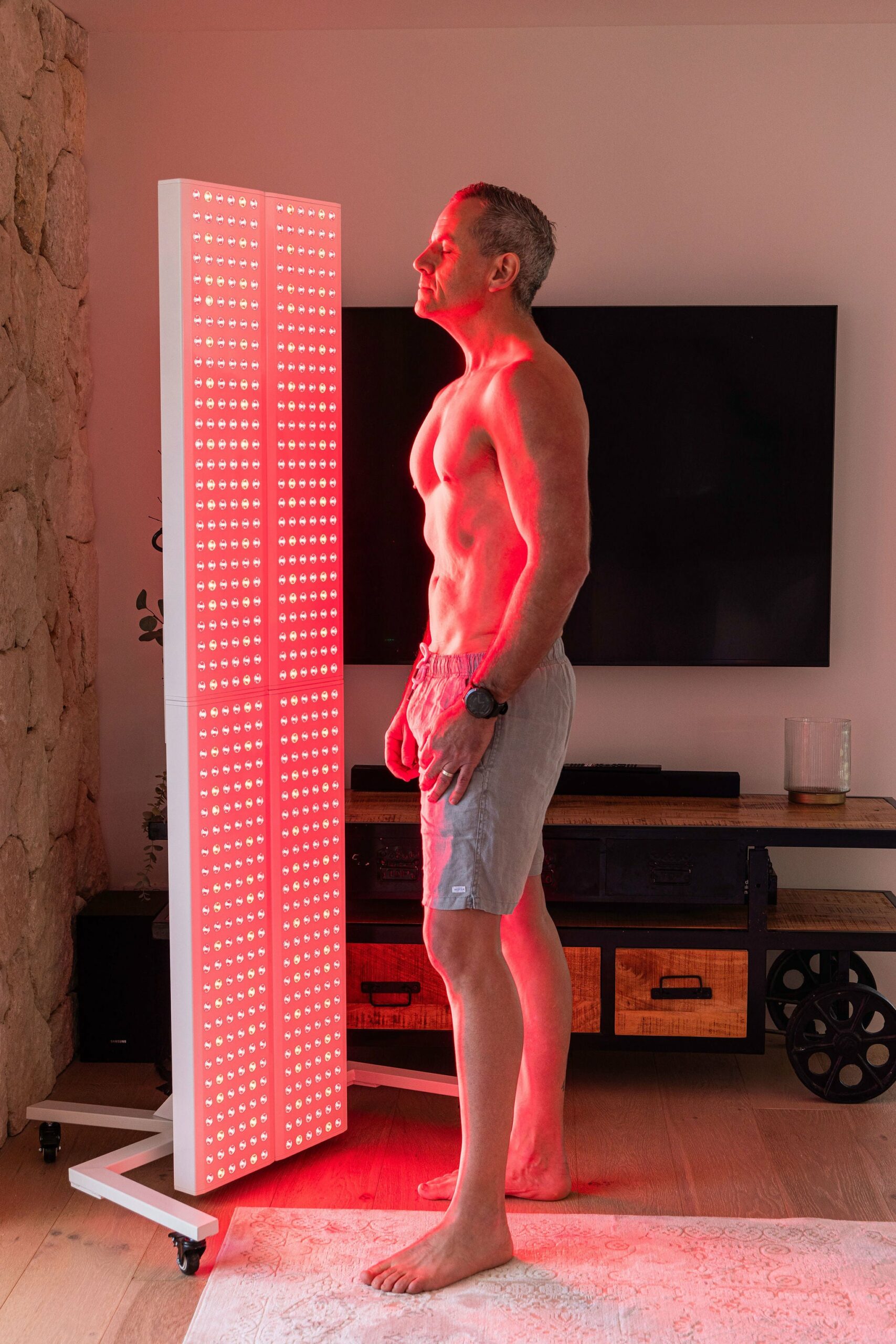
Red light is a type of visible light, Its wavelength falls between approximately 630 and 700 nanometers (nm) on the electromagnetic spectrum. Red light is often used in light therapy treatments for the skin, as it has been shown to have the most beneficial effects on skin cells and collagen production.
Near-infrared (NIR) light, on the other hand, has a longer wavelength than visible red light and falls between approximately 700 and 1200 nm on the electromagnetic spectrum. NIR light is not visible to the human eye, but it can penetrate deeper into the skin and other tissues than visible light, making it useful for a variety of therapeutic applications ranging from wound healing to inflammation reduction or improved circulation, among other benefits.
Different Red Light Therapy devices usually deliver slightly different wavelength ranges that research has shown to be the most effective for the concern they are being recommended for.
Red Light Therapy (RLT) strengthens the mitochondria, the cell’s powerhouse, where cell energy is created. Adenosine Triphosphate (ATP) is the critical energy-carrying molecule that is found in all living organisms. By optimizing the function of the mitochondria, more ATP is produced and with increased energy cells can function optimally.
This scientific breakthrough resulted in scientists discovering Red Light Therapy’s ability to stimulate and speed up tissue repair and growth. Red Light Therapy is now widely used for maintaining a healthy complexion, speeding up muscle recovery, reducing inflammation, improving sleep, treating neurological conditions, balancing hormones, treating pain, and even losing weight.
Research has also indicated that Red Light Therapy can help to restore cellular balance and alleviate the negative impact of blue light exposure. The prevalence of blue light in our society has become a growing concern as many individuals spend prolonged periods of time looking at screens on a daily basis.
Red Light Therapy (RLT) is also called:
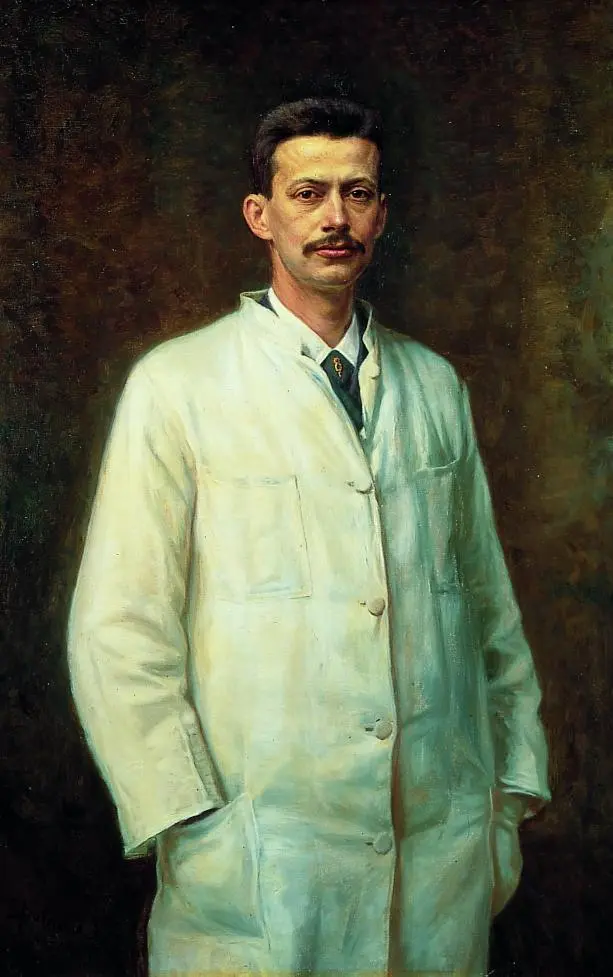
Low-Level Light Therapy (LLLT), Photobiomodulation (PBM), Cold Laser Therapy, Photonic Stimulation, Low-Power Laser Therapy (LPLT), Phototherapy
A Brief History of Red Light Therapy
The journey of Red Light Therapy (RLT) has been both fascinating and impactful, starting from its humble origins in the late 19th century. Dr. Niels Ryberg Finsen, the pioneer in light therapy, made a groundbreaking discovery in 1896 that light could be harnessed to treat Lupus Vulgaris, a form of tuberculosis affecting the skin. His work, which led to the tangible healing of skin lesions, was so revolutionary that he received the Nobel Prize in Physiology in 1903.
Fast forward to 1960, Theodore H. Maiman invented the first operational laser, fulfilling Albert Einstein's theories on the principles of lasers laid out in 1917. This invention opened new avenues for RLT, allowing more precise applications.

NASA took an interest in Red Light Therapy in 1987, conducting experiments to examine its effects on plant growth in space missions. These studies hinted at RLT's potential to benefit not just human health but also broader ecological systems.
In the same vein, Endre Mester's work in 1967 set the stage for modern RLT applications.
His experimentation with low-level laser therapy on skin cancer effects demonstrated the technique's efficacy and led to FDA approval for wound healing in 2002.
The advent of LED technology in the 1990s was a game-changer, offering an efficient and cost-effective alternative to traditional light bulbs. This technological leap made light therapy more accessible to the general public, including its use in sports medicine where physical therapists reported quicker recovery times for sports-related injuries.
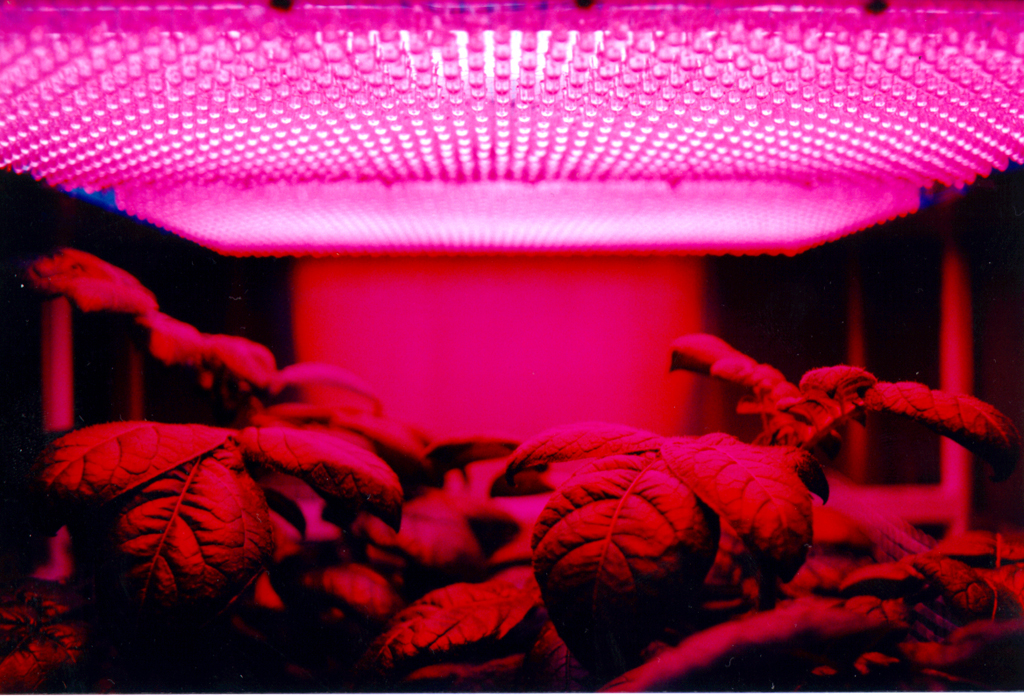
One of the most recent and exciting developments in RLT is its potential role in weight management. Studies indicate that Red Light Therapy can influence hormones like Leptin and Ghrelin, which play key roles in regulating appetite and metabolism. This makes RLT a promising avenue for non-invasive weight loss treatments.
As RLT continues to evolve, its applications keep expanding, crossing multiple disciplines from medicine to ecology. Researchers are continuously probing its potential, finding new ways to apply this age-old yet ever-advancing technology.
Our articles exclusively rely on primary sources of information, encompassing peer-reviewed medical journals and esteemed academic institutions.
- A Systematic Review and Meta-analysis of Randomized Controlled Trials of United States Food and Drug Administration-Approved, Home-use, Low-Level Light/Laser Therapy Devices for Pattern Hair Loss: Device Design and Technology:
- Efficacy Assessment For Low-Level Laser Therapy In The Treatment Of Androgenetic Alopecia: A Real-World Study On 1383 Patients:
- Lasers for Hair Regrowth: Experts Share Their Insights (byrdie.com)
- Low-Level Laser (Light) Therapy (LLLT) for Treatment of Hair Loss – PMC (nih.gov)
- Photobiomodulation For The Management Of Hair Loss:
- Low-Level Light Therapy Downregulates Scalp Inflammatory Biomarkers in Men With Androgenetic Alopecia and Boosts Minoxidil 2% to Bring a Sustainable Hair Regrowth Activity:
- Role of Low-Level Light Therapy (LLLT) in Androgenetic Alopecia
- https://www.researchgate.net/publication/257206620_The_Growth_of_Human_Scalp_Hair_Mediated_by_Visible_Red_Light_Laser_and_LED_Sources_in_Males
- Examining the Safety and Efficacy of Low-Level Laser Therapy for Male and Female Pattern Hair Loss: A Review of the Literature:
- https://practicaldermatology.com/articles/2020-jan/Shedding-Some-Light-On-Hair-Loss
- Role of Low-Level Light Therapy (LLLT) in Androgenetic Alopecia:
- Photodynamic And Photobiological Effects Of Light-Emitting Diode (LED) Therapy In Dermatological Disease: An Update:
- Photobiomodulation for the management of hair loss
